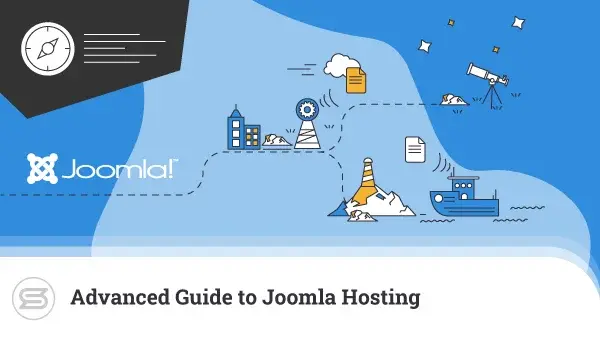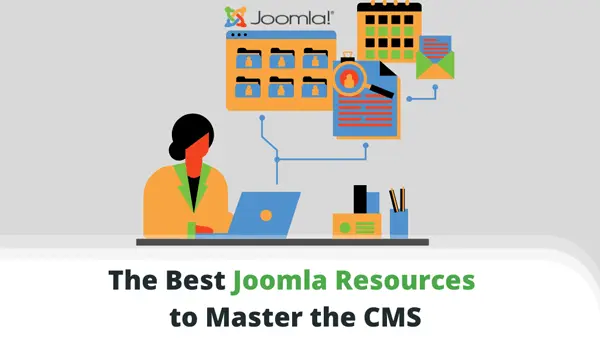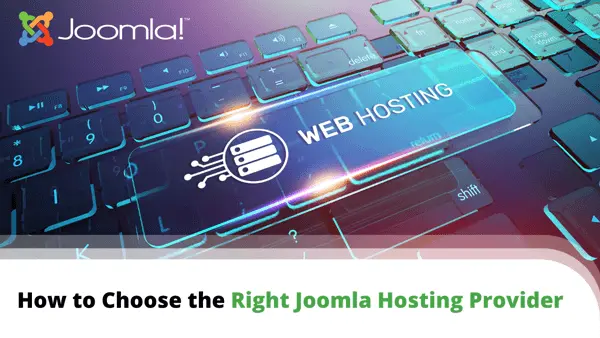Welcome to the exploration of Joomla 3 vs. Joomla 4, where we compare the old and the new and discover what exciting changes this new version of Joomla offers!
If you’ve been following the Joomla world, you know that the newest version, Joomla 4, is quickly taking center stage. But what makes it different than its predecessor, Joomla 3?
Let’s explore the differences between Joomla 3 and Joomla 4 and see what makes the new version shine!
What is Joomla?

Joomla is a free, open-source content management system (CMS) for publishing web content. It is built on a model–view–controller web application framework that can be used independently of the CMS.
Joomla is written in PHP and uses object-oriented programming and software design patterns. It stores data in a MySQL, MS SQL, or PostgreSQL database.
Joomla offers features like page caching, RSS feeds, printable versions of pages, news flashes, blogs, search, and support for language internationalization.
Why Joomla?
Joomla is one of the most popular content management systems (CMS) available today. There are some good reasons for that:
- It is free, open-source, and offers a wide variety of features and customization options.
- It is easy to use and has a simple interface for managing websites.
- It is very flexible and can make everything from simple personal websites to complex web apps for businesses.
- It is safe, reliable, and highly scalable, suitable for businesses of every size..


What’s the difference between Joomla 3 and Joomla 4?
Joomla didn’t begin with its third iteration. Both Joomla 3 and Joomla 4 are upgrades of the original Joomla.
| Joomla 4 is the most recent version based on the modern Symfony framework. Joomla 4 brings many new features, such as a new media manager, improved security, and a modern user interface. It also allows developers to create custom extensions with more ease. It also lets you make forms by dragging and dropping, has a better media manager, supporters multilingual websites, and has a better user interface. | Joomla 3 is the old version of Joomla, built on the legacy MVC framework. It includes a range of bug fixes and feature updates. Some of the most important changes are improvements to the search system, support for the most recent version of PHP, and easier access. The TinyMCE editor has been updated to version 4.7, and the Protostar template has been updated to use Bootstrap 4. |
Overview of Joomla 3

Joomla 3 provides a number of bug fixes and improvements to the core, including a new way to create custom forms, a new module to show the currently logged-in user, and improved support for the REST API.
Additionally, this release includes several security fixes for potential SQL injection vulnerabilities.
The accessibility checker in Joomla 3 ensures that all users, including those with disabilities, can see the content. This checker lets you know about possible problems or common mistakes that might prevent people from getting to certain content.
Also, the latest version of Joomla 3 has some small improvements to the user interface, like better support for custom fields, page titles, and a better language selector.
Overview of Joomla 4

Joomla 4 is the latest version of the popular open-source content management system (CMS). It is the successor to Joomla 3, released in 2016. It’s a big update to Joomla that adds many new features, fixes, and security improvements.
Joomla 4 is built on the latest technologies, including PHP 7, the jQuery JavaScript library, and the Bootstrap 4 front-end framework.
It has a new admin interface, a reworked media manager, a better workflow, and a new routing system for better SEO.
It also has a new template framework and better security features, like two-factor authentication.
Joomla 4 is designed to make creating and managing content easier and faster. It can build websites, blogs, forums, eCommerce stores, and more. The CMS is free to download and comes with many free and paid add-ons that can change its look and functionalities.
What’s better: Joomla 3 or Joomla 4?
Joomla 4 is now the recommended app version and is the only one that will be supported after August 17, 2023. This means that when it comes to optimized performance and security – this is the version you should be aiming to utilize.
IMPORTANT: While some extensions and templates may still work on older versions of Joomla, they may not be compatible with Joomla 4.
When upgrading your core application,it’s always important to ensure that all of your extensions and templates work with the new version.
In summary, Joomla 4 is the clear winner for larger websites:
- Better Performance: Joomla 4 has been optimized for speed and performance, so caching and loading times are faster.
- Scalability: Scalability has been improved in Joomla 4, which means it can handle more traffic and accommodate larger websites.
- Improved Database Performance: Joomla 4 has improved database performance, allowing it to handle large amounts of data better.
What’s New in Joomla 4?

The core of Joomla 4 has been improved in many ways, such as the JavaScript task scheduler and an accessibility checker. This major core release includes a new feature for creating a child template as well. This is ideal for websites that use multiple templates as it simplifies their management immensely.
The core also supports the popular Bootstrap 4 library, which creates responsive sites. In addition, Joomla 4 has a new unified media manager that allows users to utilize images, videos, and documents in one place.
The new version introduces better customization options and improved content editing. It also has a better token system that makes the websites even safer.
Let’s look at some more major improvements in Joomla 4:
1) Improved Codebase
Joomla 4 is built on a modern and improved codebase that is much better than what Joomla 3 has to offer. Compared to its predecessor, this new codebase makes it easier to add new features to your CMS.
2) Advanced Security
Joomla 4 has a better security system that protects against security threats and backdoors. The new release also flaunts better user authentication and authorization systems, making it even harder for hackers to get into a website.
3) Improved User Interface
Joomla 4 has a much more intuitive user interface, making it easier to navigate around your site. Compared to Joomla 3, you can count on a more modern look and improved mobile responsiveness.
4) Gutenberg Editor
With the popular Gutenberg editor, which is an integral part of Joomla 4, users can create websites quickly and easily. This comes as a welcome alternative to the default TinyMCE editor in Joomla 3.
5) Improved Media Manager
Joomla 4 includes an improved media manager, allowing users to manage images and other media files more easily. There are many helpful features in that aspect, like the ability to drag and drop files and organize media files into folders.
6) Improved Menu Manager
Joomla 4 also includes an improved menu manager, helping webmasters create and edit menus on their websites. The tool offers perks like drag-and-drop, menus with multiple levels, and loads of customization options.
7) Improved SEO
Joomla 4 offers advanced SEO features that make it easier for search engines to find your websites and index them. This includes the improved metatags which are a great helper when optimizing your content for web crawlers.
What’s Next for Joomla
Joomla is a great choice for anyone who wants to build a website or web application from scratch. It is a mighty and popular open-source CMS, and its 4th generation should make the app even more attractive to developers and users alike.
The Joomla project always adds new features that let users change how things function to better suit their specific needs. The new CMS version also gives developers a number of tools to easily create extensions for Joomla. This ensures the entire community benefits from regular releases of new tools, patches, and improvements.
FAQs
Q: What are the major differences between Joomla 4 and Joomla 3?
A: The main differences between Joomla 4 and Joomla 3 are a completely new architecture and codebase, support for modern web technologies like HTML5 and CSS3, an improved user experience with custom fields, a new media manager, an improved administrative interface, and a stronger security system.
Q: What is the minimum version of PHP required for Joomla 4?
A: Joomla 4 needs at least PHP 7.2, which is a newer version of PHP than what Joomla 3 requires (5.6).
Q: Is there an upgrade path from Joomla 3 to Joomla 4?
A: Yes, the Joomla 4 upgrade path is available through the Joomla 3.9.x series. The Joomla 3.9.x series is a “bridge” between Joomla 3 and Joomla 4. It lets users upgrade their websites to the latest version of Joomla.


